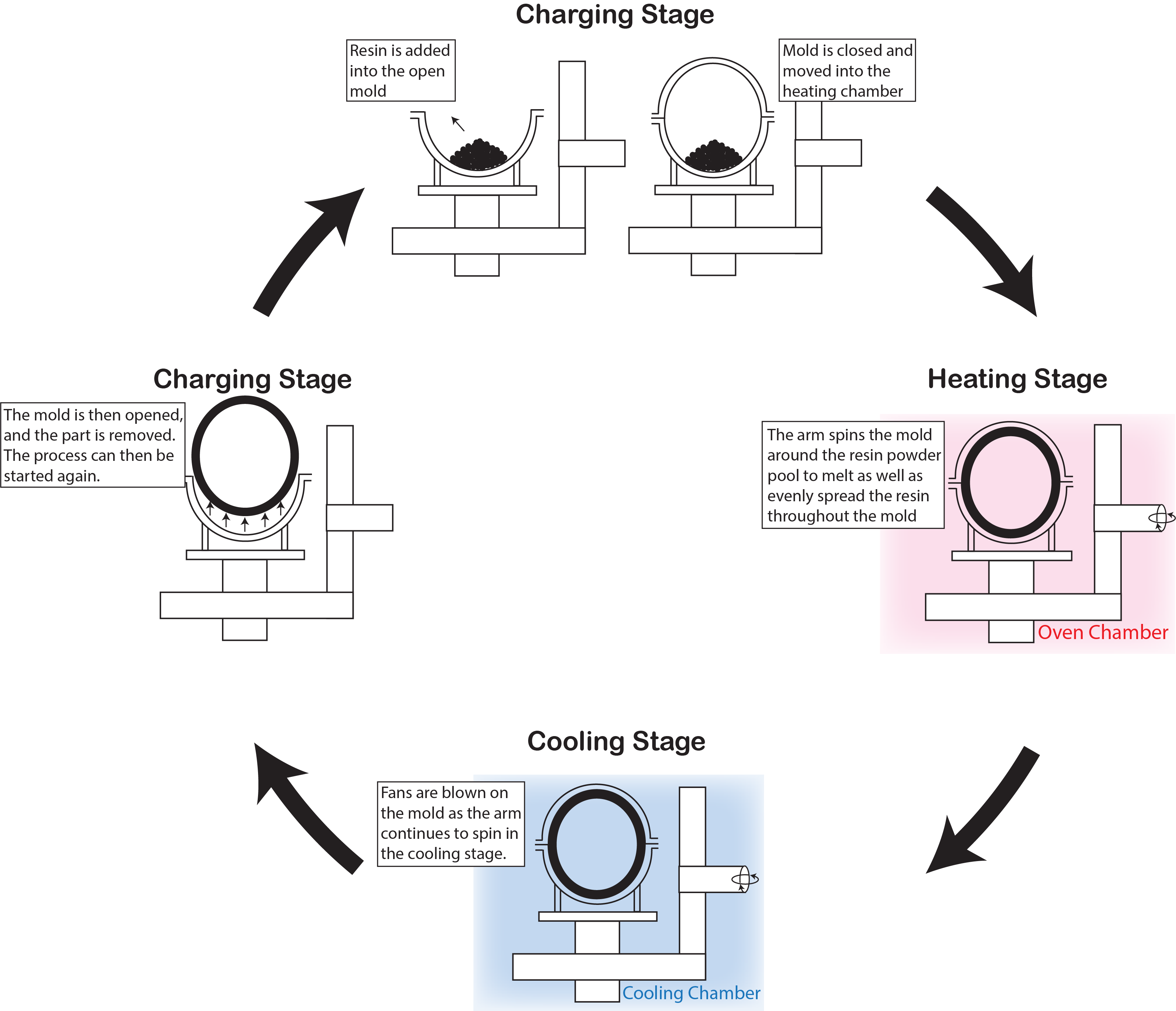What is Rotational Molding or Rotomolding?
See below diagrams showing how the machining process for rotational plastics molding works.


The Rotational Plastics Molding Process







Rotational Molding or Rotomolding Definitions
Rotational Molding or Rotomolding
Rotomolding is a production process specifically involving the transformation of plastics utilizing only temperature and rotation, thus forming the parts. The hollow, plastic parts consequently take shape by adding resin (i.e. pulverized polyethylene) into an open mold. The mold is then closed, heated, and cooled all while slowly and continuously rotating on one or more axis.
The Machining Process
Rotational molding machining processes typically have three stages: the charging station, the heating chamber, and the cooling chamber. Molds filled with resin move into the oven via the machine arm. The machine arm then spins the mold(s) in the oven at a specific temperature point, evenly coating the resin material across all surfaces of the mold. Fans and/or water cool the mold(s) while continuously rotating. Finally, the mold can be opened, and the fully formed part removed.
Mold/Tooling
The mold and/or tooling is a vessel that resin adheres to all surfaces of when simultaneously heated and rotated in order to form its shape. Molds for rotational molding are commonly cast out of aluminum, CNC machined out of aluminum or are fabricated with aluminum or steel. Additionally, destaco clamps, or bolts and receivers typically secure the mold(s) shut.
Examples of Types of Plastic Resin used in rotomolding
Polyethylene: Linear Low Density, Linear Medium Density, Linear High Density, and Crosslinked
Acetal
Poly Vinyl Chloride (PVC)
Polypropylene
Nylon: 6, 11, 12
Examples of Add-Ons
Inserts (Mold-in, Post-Molding)
Rivets or Riv-nuts
Polyurethane Foam Filling (In-Mold and Post-Molding)
Molded-In or Mold-On Graphics
